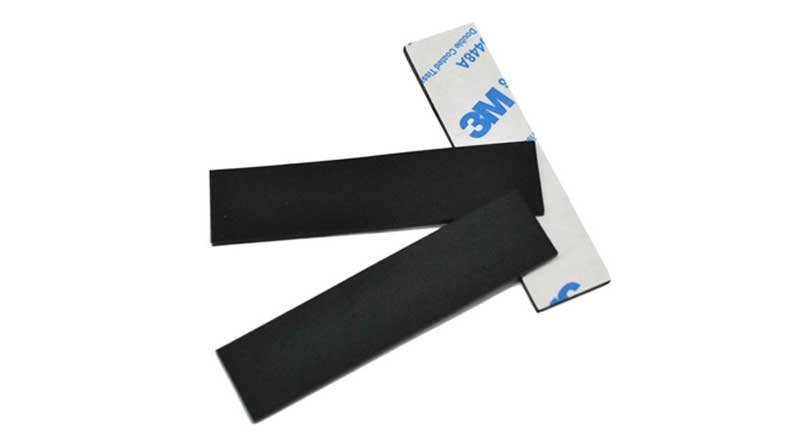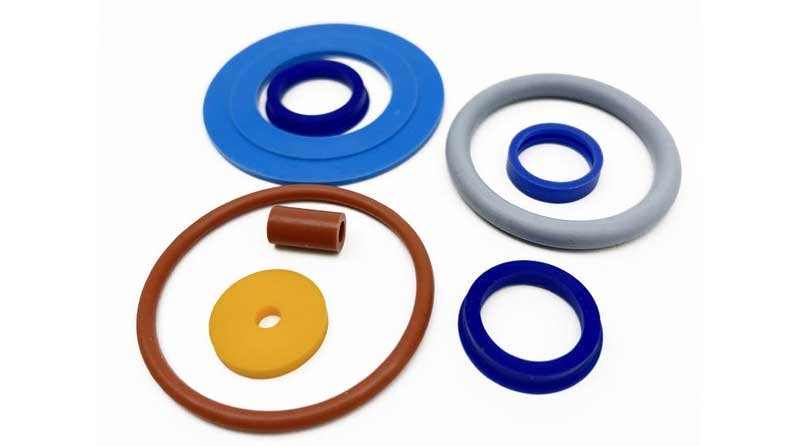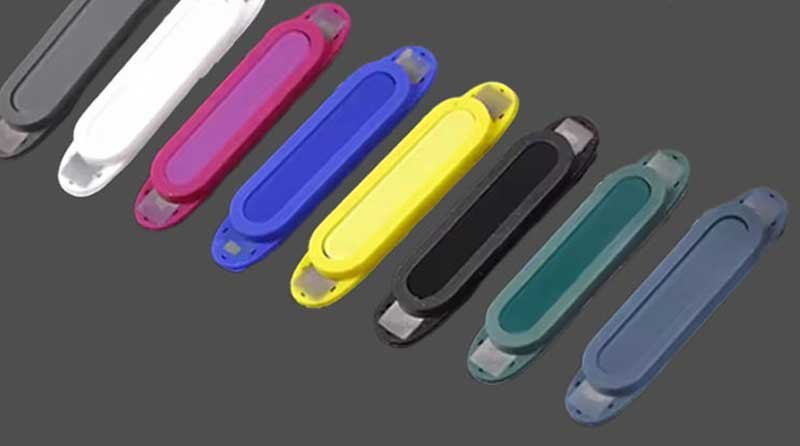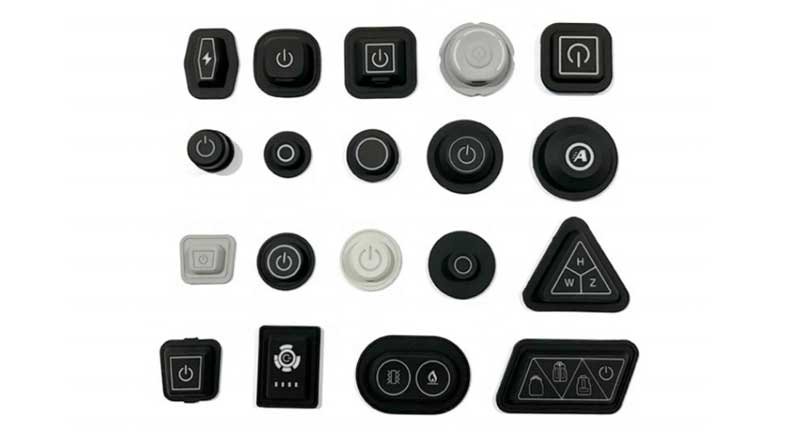Why should manufacturers choose silicone die cutting for their production needs?
Silicone die cutting offers numerous benefits, including fast production speeds and precise results. It plays an essential role in industries ranging from electronics to automotive and medical devices.
In this article, we will explore the process of silicone die cutting, its benefits, and different die cutting machines.
What Is Silicone Die Cutting?
Silicone die cutting is a cutting process. It uses a die to apply pressure to silicone materials. These materials are usually in sheet or roll form and are cut into the desired shape and size. This method is commonly used to produce various silicone products, such as gaskets, seals, washers, and labels.
What Is the Process of Silicone Die Cutting?
First, the die is designed and created based on the product drawings and specifications. The die must be made with a specific shape and size. There are various types of dies, including steel dies, etched dies, and engraved dies. The choice of die depends on factors such as production volume, accuracy requirements, and material properties.
Next, the silicone material is prepared by placing silicone sheets or rolls onto the worktable of the die cutting machine. The cutting process then begins. The die cutting machine applies pressure to press the die onto the silicone material, shaping it into the desired form. Depending on the equipment, the cutting method can either be flatbed or rotary.
Finally, after the cutting is complete, any excess material is removed, and a quality inspection is performed to ensure that the product meets the required dimensions and shape.

What Are the Benefits of Silicone Die Cutting?
Silicone die cutting offers a range of benefits. From exceptional accuracy to cost-effective mass production, this process meets the demanding requirements of various industries.
Ultra-High Precision and Micro-Structure Processing Capability
The tolerance control of silicone die cutting is as follows.
- Extreme Precision: The silicone die cutting process can achieve tolerances as tight as ±0.01mm. This makes it ideal for applications involving ultra-thin silicone (0.05mm thickness).
- Micro-hole Array: The process is capable of creating dense hole patterns with diameters as small as 0.1mm and spacing as tight as 0.15mm, making it perfect for micro-sensor seals.
- Irregular Cutting: Silicone die cutting can handle sharp corners with radii less than 0.05mm, a task that is difficult for traditional laser cutting due to the melting of edges.
The application cases of silicone die cutting are as follows.
- TWS Earphone Breathable Membrane: Silicone die cutting is used to cut 60μm thick foam silicone. It can create breathable holes with a diameter of 0.3mm ±0.02mm.
- MEMS Chip Packaging Gasket: The process enables the creation of 36 irregular through-holes in a 5x5mm area.

Production Efficiency and Mass Production Advantages
Production Speed Comparison:
| Process Type | Single Machine Capacity (pieces/hour) | Changeover Time | Suitable for Batch Size |
| Silicone Die Cutting | 8,000 – 12,000 | 15 minutes | 100,000+ pieces |
| CNC Machining | 200 – 500 | 2 hours | 1 – 1,000 pieces |
| 3D Printing | 50 – 100 | No changeover | 1 – 100 pieces |
The table compares the production capacity, changeover time, and suitable batch sizes for silicone die cutting, CNC machining, and 3D printing. Silicone die cutting stands out for its high capacity, with a single machine able to produce 8,000 to 12,000 pieces per hour and a quick 15-minute changeover time. This makes it ideal for large-scale production, particularly when batch sizes exceed 100,000 pieces. In terms of cost efficiency, silicone die cutting is highly economical. The mold amortization cost is minimal, accounting for less than 0.5% of the total cost when producing 1 million pieces. Besides, it is energy-efficient, using only 0.08kWh per 1,000 pieces—about one-third of the energy consumed by laser cutting.
Consistency and Reliability
Silicone die cutting ensures high consistency and reliability with strict quality control. The edge integrity is maintained with burr heights ≤5μm. This meets medical-grade requirements. The process also guarantees interface stability, with peel strength variation limited to ≤±5%, adhering to automotive electronics standards. Moreover, cleanliness is carefully controlled to meet ISO Class 5 cleanroom standards.
Technical and Economic Comparison
| Feature | Silicone Die Cutting | Laser Cutting | Precision Stamping |
| Minimum Feature Size | 0.05mm | 0.1mm | 0.3mm |
| Heat Affected Zone | None | 20-50μm | None |
| Unit Cost | $0.001 – $0.01 (100,000+ pieces) | $0.05 – $0.1 | $0.005 – $0.02 |
| Environmental Rating | ★★★★☆ | ★★★☆☆ | ★★★★☆ |
This table compares silicone die cutting, laser cutting, and precision stamping. Silicone die cutting offers the smallest feature size, no heat-affected zone, and the lowest cost per unit, especially for large batches. It also has the best environmental rating. Compared to laser cutting and precision stamping, silicone die cutting is a more reliable and economical choice for high-precision, large-scale manufacturing.

What Are the Differences Between Different Die Cutting Machines?
Manual Die Cutting Machine
| Parameter | Details |
| Pressure Range | 0.1-1.0 tons (lever-operated pressure) |
| Cutting Precision | ±0.2mm (depends on manual alignment) |
| Die Types | Wooden die / Acrylic die |
| Suitable Materials | Thickness 0.5-5mm, Shore A hardness 20-70 |
Manual die cutting machine offers several advantages, including low equipment cost, no need for electrical power, and quick mold changes, which take only about 5 minutes. However, it comes with some disadvantages, such as extremely low efficiency, with only 10-30 cuts per hour, a high manual error rate (±0.5mm), and it is only suitable for materials with a thickness of 5mm or less.
Manual die cutting machines are commonly used in the medical field for creating prototypes of surgical instrument seals, with small batches ranging from 50 to 100 pieces. They are also ideal for custom products, such as manual DIY silicone buttons, particularly when irregular cutting shapes are required.
Mechanical Automatic Die Cutting Machine
| Parameter | Details |
| Drive System | Servo motor + Ball screw (repeatable positioning accuracy ±0.01mm) |
| Control Unit | PLC + HMI interface (supports G-code programming) |
| Pressure Control | Adjustable 0.1-10 tons (piezoelectric sensor feedback) |
| Die Life | Steel die 500,000-1,000,000 cuts, Magnetic die 50,000-100,000 cuts |
Mechanical automatic die cutting machine is widely used in industries such as consumer electronics and automotive manufacturing. In consumer electronics, it is used for the mass production of smartphone waterproof seals, with a production speed of 8,000 cuts per hour and a tolerance of ±0.03mm. In automotive manufacturing, it is used for making insulating gaskets for new energy batteries, with a daily production capacity of 100,000 pieces of 1.5mm thick silicone.

Laser Cutting Machine
| Parameter | Details |
| Cutting Speed | 0.5-20m/min (depends on power and thickness) |
| Heat Affected Zone | 10-50μm (requires nitrogen protection to reduce carbonization) |
| Minimum Line Width | 0.01mm (UV laser) |
Laser cutting machines are used in various advanced applications, such as microfluidic chips and flexible circuits. In microfluidic chips, UV lasers are employed to precisely cut 50μm wide fluid channels, with an accuracy of ±2μm. For flexible circuits, CO2 lasers are used to form conductive pathways on silicone substrates, providing a non-contact, highly accurate method of processing.
Punch Press Die Cutting Machine
| Parameter | Details |
| Punching Pressure | 10-200 tons (hydraulic/mechanical drive) |
| Die Material | SKD11 tool steel (hardness HRC 58-62) |
| Precision Assurance | Guide pillar and sleeve structure (parallelism ≤0.01mm/m) |
Punch press die cutting machines are commonly used for high-volume industrial and construction applications. In industrial sealing, they are used to cut engine oil seals from 3mm thick silicone, with a daily production capacity of 50,000 pieces. For building seals, punch press machines can produce continuous lengths of door and window waterproof seals, extending beyond 10 meters, making them ideal for large-scale construction projects.

What Are the Trends in the Global Silicone Die-Cutting Market?
The global silicone die-cutting market is expanding, driven by demand from several key industries. In the automotive sector, the rapid adoption of electric vehicles has increased the need for silicone seals, insulation, and thermal management solutions. The medical device industry also plays a crucial role, as silicone’s high biocompatibility and sterilization resistance drive the demand for high-performance die-cut parts. Additionally, the electronics industry’s push for smaller, more powerful components increases the demand for precise silicone die cutting for sealing, heat conduction, and insulation.
To meet these specialized needs, there is a focus on ultra-high precision and micro-structure processing, leading to widespread use of CNC and laser cutting. These technologies allow for complex shapes and strict tolerances that traditional methods cannot achieve. However, for large-scale production, rotary die cutting remains key due to its efficiency and cost-effectiveness.
Manufacturers are facing cost pressures, leading to trends like optimizing production, increasing automation, and improving material utilization. As environmental awareness grows, sustainable practices and eco-friendly silicone materials are becoming more important. Lastly, customized silicone die-cutting solutions are rising in demand, with suppliers offering fast-response services being more competitive. Market trends also show regional differences based on industrial structures and priorities.
Conclusion
Silicone die cutting is a versatile and efficient process that plays a crucial role in various industries. It offers high precision and flexibility for producing custom parts. Whether for small batches or large-scale production, silicone die cutting meets the growing demands of modern manufacturing.
With many years of experience in silicone product manufacturing, our expert team is ready to meet your custom requirements with excellent technology. Contact us today for your tailored solutions!